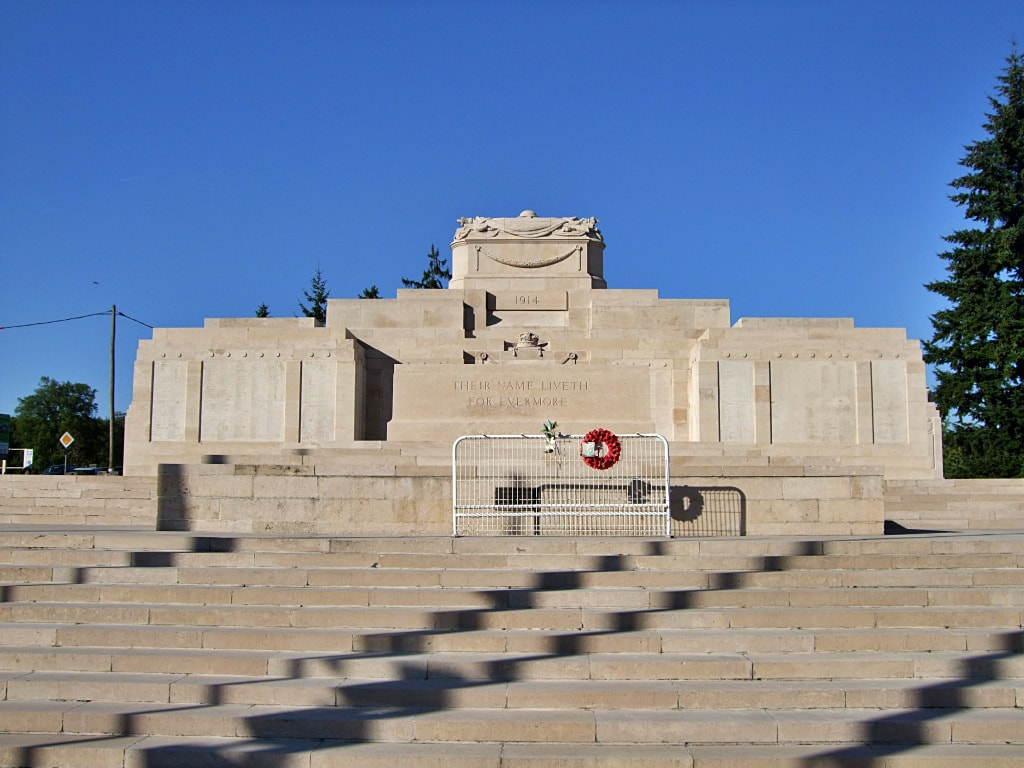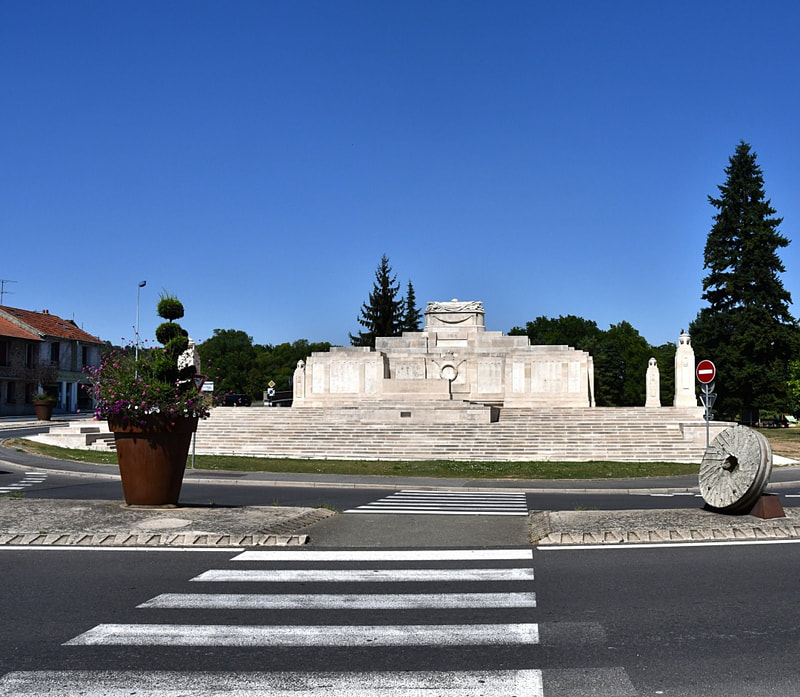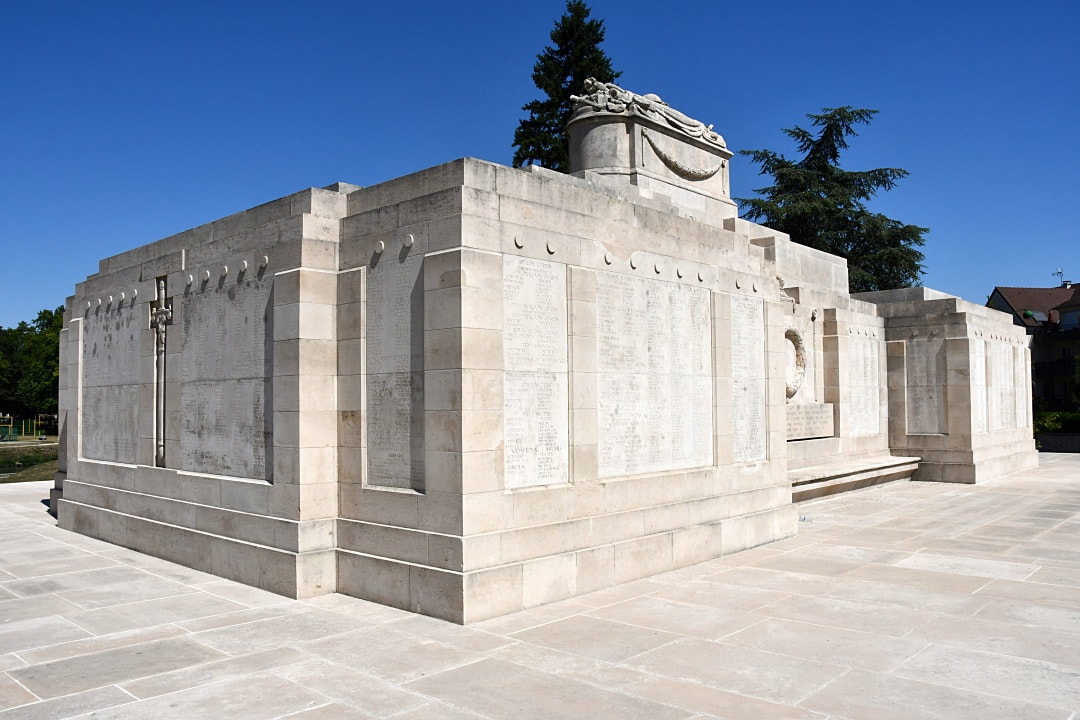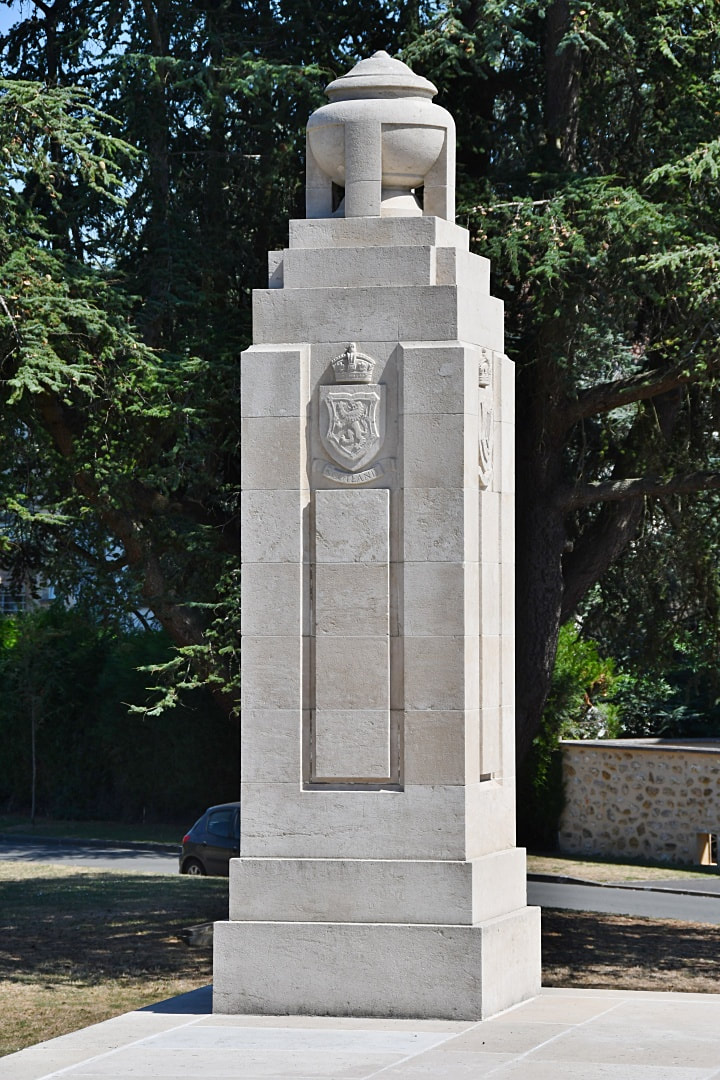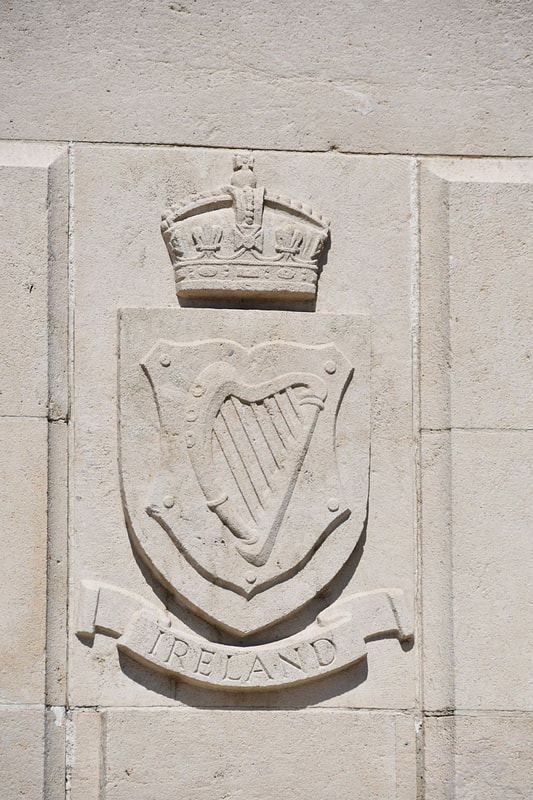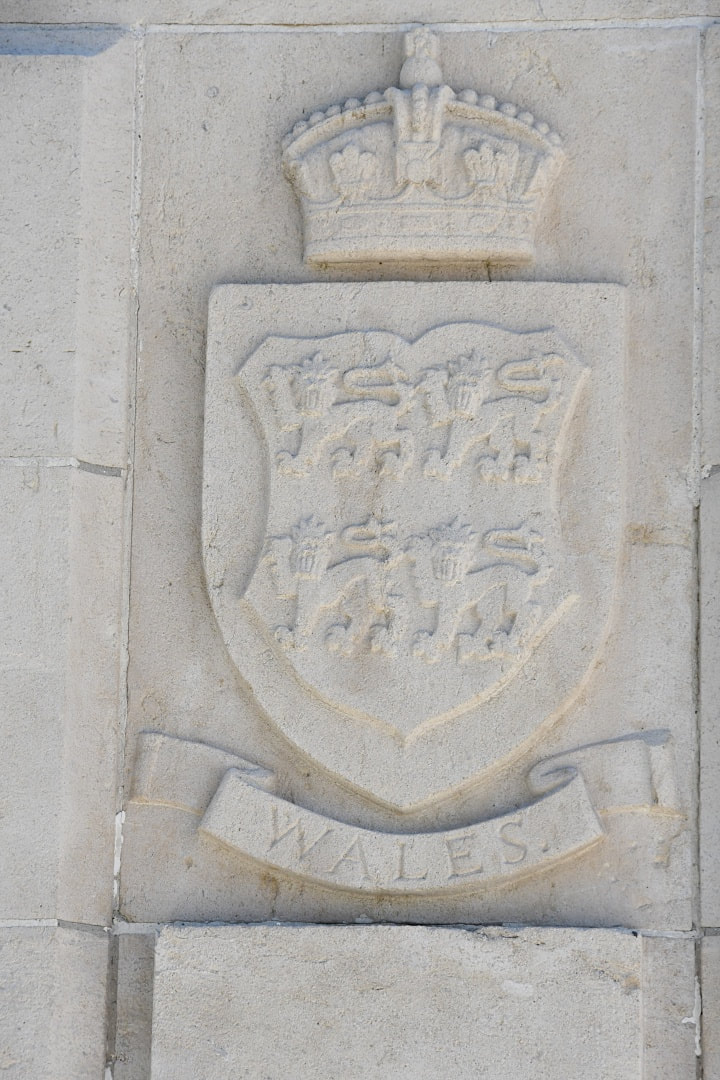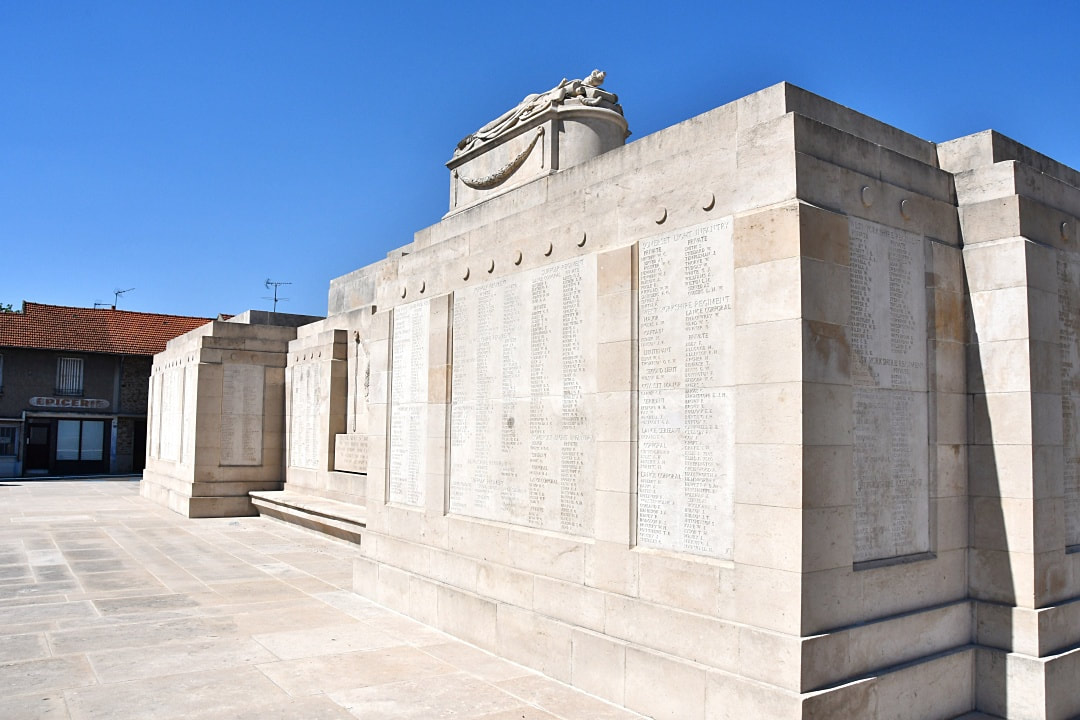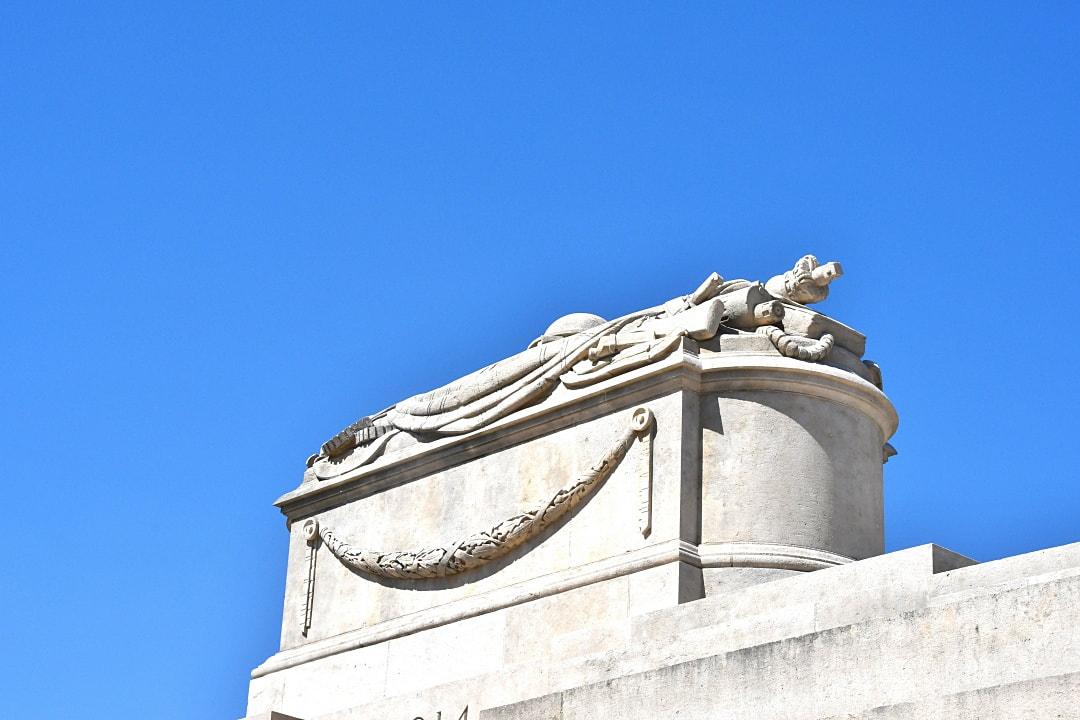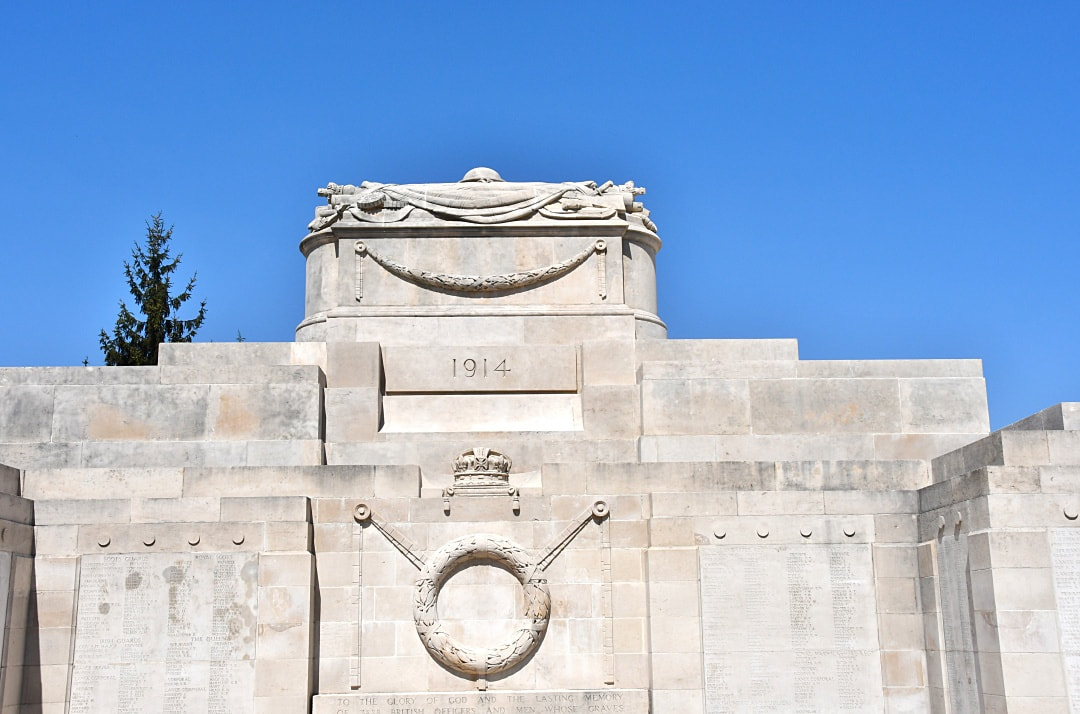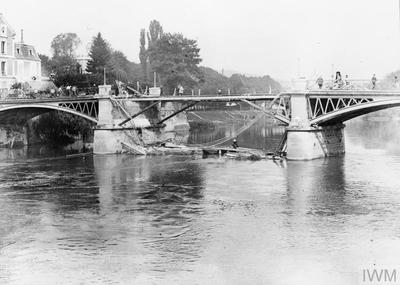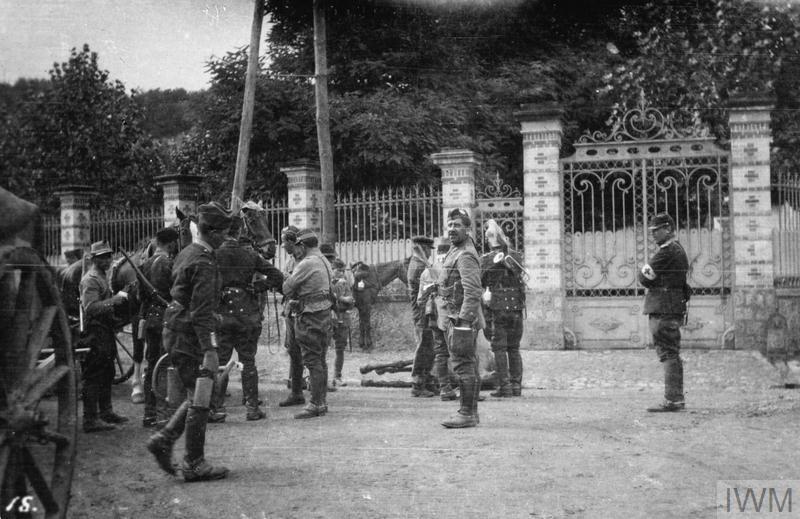LA FERTÉ-SOUS-JOUARRE MEMORIAL
Seine-et-Marne
France
GPS Coordinates: Latitude: 48.94338, Longitude: 3.12415
Roll of Honour
Listed by Surname
Location Information
La Ferté-sous-Jouarre is a small town 66 kilometres to the east of Paris, located on the main road (N3) running east from Paris.
The Memorial is situated in a small park on the south-western edge of the town, on the south bank of the River Marne, just off the main road to Paris, The Memorial Register is kept at the Town Hall.
Visiting Information
Names are listed on the memorial by Regiments in order of precedence, under the title of each Regiment by rank, and under each rank alphabetically.
Historical Information
La Ferté-sous-Jouarre Memorial to the Missing
The La Ferté-sous-Jouarre Memorial commemorates 3,765 officers and men of the British Expeditionary Force (BEF) who fell at the battles of Mons, Le Cateau, the Marne and the Aisne between the end of August and early October 1914 and have no known graves. The monument is constructed of white Massangis stone and surmounted by a sarcophagus onto which military trophies are laid. At the four corners of the pavement on which the monument stands are stone columns supporting urns which bear the coats of arms of the four constituent nations of the United Kingdom. The memorial was designed by George H. Goldsmith, a decorated veteran of the Western Front, and unveiled by Sir William Pulteney, who had commanded the III Corps of the BEF in 1914, on 4 November 1928.
Close to the bridge on both banks of the river stand the stone columns which make up the 4th Division Royal Engineers Memorial. The columns are surmounted with the flaming grenade of the Royal Engineers and mark the spot at which British sappers constructed a floating assault bridge under German artillery fire on 9 and 10 September 1914.
The British Expeditionary Force at the Battle of the Marne.
By the beginning of September 1914, the German Imperial Army had swept through much of Belgium and north eastern France and was fast approaching Paris. By 3 September, the British and French forces had been retreating south west for over two weeks, German victory was a definite possibility, and the Allied Commander, Général Joffre, prepared to launch a major counter offensive. As night fell on 5 September, the men of the British Expeditionary Force began to halt approximately 40 kilometres south east of Paris and their gruelling retreat was at an end. For the next two days, British I, II and III Corps advanced north eastward, encountering only minor resistance from the German forces in the area, which had reached the limit of their advance and were now carrying out a tactical retreat. On 8 September, British infantry brigades advancing toward the Marne came under heavy machine-gun and artillery fire from German units in La Ferté sous Jouarre and on the north bank of the river where they had formed a bridgehead. The British withdrew, began bombarding the German positions, and by mid-afternoon had entered the town in force. Both of the local bridges had been blown, but the Royal Engineers immediately began to construct a floating bridge, over which III Corps crossed the Marne on 10 September and joined I and II Corps which had crossed the river further to the east the previous today.
The German armies were now in full retreat to the north and east, hotly pursued by the combined British and French forces. Retreating German units fought rearguard actions under heavy rainfall throughout the day on 11 September and by the morning of the 12th they had occupied defensive positions on the high ground overlooking the northern banks of the River Aisne.
The Battle of the Marne, referred to in the French press as the ‘Miracle of the Marne’, halted the month-long advance of the German forces toward Paris and decisively ended the possibility of an early German victory. The battle also marked the beginning of trench warfare as Allied and German forces entrenched during and after the Battle of the Aisne in mid-September. By November battle lines had been drawn that would remain virtually unchanged for almost four years. The British Expeditionary Force suffered almost 13,000 casualties during the Battle of the Marne, of whom some 7,000 had been killed.
The memorial was designed by George Hartley Goldsmith and unveiled by Sir William Pulteney on 4 November 1928.
Commemorated: United Kingdom 3,741.
Dedication
10016 Private Roy Robert Parkinson, 1st Bn., East Surrey Regiment, died 9th September 1914.
Remembered by nephew Derek Andrews.
Shot at Dawn
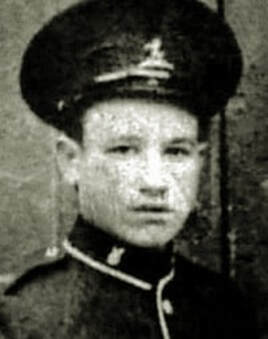
L/10061 Private
Thomas James Highgate
1st Bn. Queen's Own (Royal West Kent Regiment)
executed for desertion on 8th September 1914, aged 19.
He had enlisted at the age of 17; & on 5 September 1914, during the retreat from Mons, & after less then 2 months in action, left the line of march, being found the next day by a gamekeeper, hiding in a barn. Highgate was in civilian clothes & still carried his pay-book; his discarded uniform was found nearby, but no rifle or ammunition.
Medical examination that afternoon found him fit, & trial was at once organised, emergency procedure being invoked to deny the accused an advance copy of the summary of evidence against him.
Unrepresented, he pleaded Not Guilty, & sought to explain how he had come to absent himself, but could not when questioned account for his civilian clothes.
The adverse verdict & the sentence of death were endorsed by the Corps Commander within 4 hours, & finally confirmed by the C-in-C the next day. Execution — now just 2 days after his arrest — was ordered to be ‘as public as possible’, as ‘the Brigade Group is marching past’. It was the fifth week of the war,& Highgate was the first soldier of the BEF to be so condemned.
Army lists published after the war gave ‘Died of Wounds’ as the cause of death, perhaps due to embarrassment in high places. (Putkowski, pp.25-26; Corns, pp.112-116). (where can be seen a copy of the original document confirming sentence, with the signature of Field Marshal French’)
9641 Private George Ward, 1st Bn. Royal Berkshire Regiment, executed for cowardice 26th September 1914, aged 20. Son of George and Jane Ward, of 1, Guinness Buildings, Brandon Street, Walworth, London.
On 16 Sept 1914, he withdrew from the firing line on the line of the R Aisne as the Germans pulled back N from the R Marne. Challenged by his CSM as he walked back, Ward said that he had been hit, & disappeared: it was his third day of active service.
Ward was next seen, unwounded, at 1000 hours on Sept 23 by the CSM & reported to the latter at noon the same day, fully armed & equipped. He was arrested & tried the next day. Though Ward pleaded Not Guilty, he seems to have put forward no defence. After his conviction & the sentence of death, the Corps commander Sir Douglas Haig opined that an example was required, the C-in-C Sir John French concurred — & he was executed 2 days later.(Putkowski, pp 26-27; Corns, pp.118-120)
Thomas James Highgate
1st Bn. Queen's Own (Royal West Kent Regiment)
executed for desertion on 8th September 1914, aged 19.
He had enlisted at the age of 17; & on 5 September 1914, during the retreat from Mons, & after less then 2 months in action, left the line of march, being found the next day by a gamekeeper, hiding in a barn. Highgate was in civilian clothes & still carried his pay-book; his discarded uniform was found nearby, but no rifle or ammunition.
Medical examination that afternoon found him fit, & trial was at once organised, emergency procedure being invoked to deny the accused an advance copy of the summary of evidence against him.
Unrepresented, he pleaded Not Guilty, & sought to explain how he had come to absent himself, but could not when questioned account for his civilian clothes.
The adverse verdict & the sentence of death were endorsed by the Corps Commander within 4 hours, & finally confirmed by the C-in-C the next day. Execution — now just 2 days after his arrest — was ordered to be ‘as public as possible’, as ‘the Brigade Group is marching past’. It was the fifth week of the war,& Highgate was the first soldier of the BEF to be so condemned.
Army lists published after the war gave ‘Died of Wounds’ as the cause of death, perhaps due to embarrassment in high places. (Putkowski, pp.25-26; Corns, pp.112-116). (where can be seen a copy of the original document confirming sentence, with the signature of Field Marshal French’)
9641 Private George Ward, 1st Bn. Royal Berkshire Regiment, executed for cowardice 26th September 1914, aged 20. Son of George and Jane Ward, of 1, Guinness Buildings, Brandon Street, Walworth, London.
On 16 Sept 1914, he withdrew from the firing line on the line of the R Aisne as the Germans pulled back N from the R Marne. Challenged by his CSM as he walked back, Ward said that he had been hit, & disappeared: it was his third day of active service.
Ward was next seen, unwounded, at 1000 hours on Sept 23 by the CSM & reported to the latter at noon the same day, fully armed & equipped. He was arrested & tried the next day. Though Ward pleaded Not Guilty, he seems to have put forward no defence. After his conviction & the sentence of death, the Corps commander Sir Douglas Haig opined that an example was required, the C-in-C Sir John French concurred — & he was executed 2 days later.(Putkowski, pp 26-27; Corns, pp.118-120)
Images in gallery below © Johan Pauwels

French civilians gather around the grave of a soldier of the Seaforth Highlanders, who was killed in action at La Ferte-sous-Jouarre, 28 September 1914. Note the children who are also present at the grave.
The soldier buried is possibly 973 Private, Ellis Walker of the 2nd Battalion, Seaforth Highlanders who died on 27 September 1914. © IWM (Q 53263)




